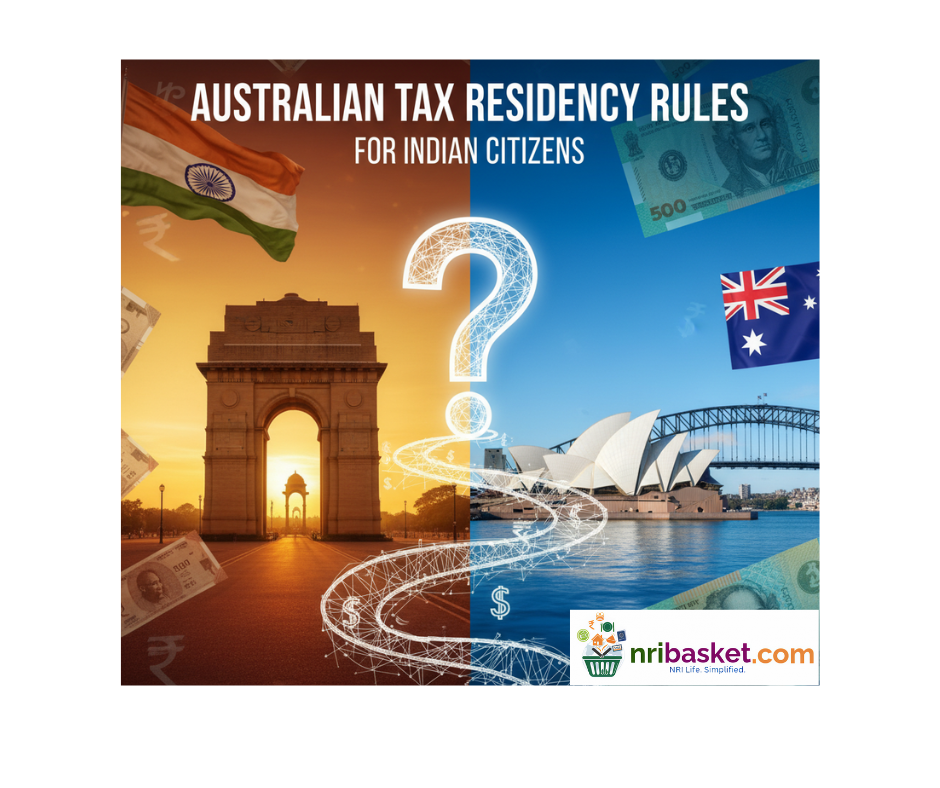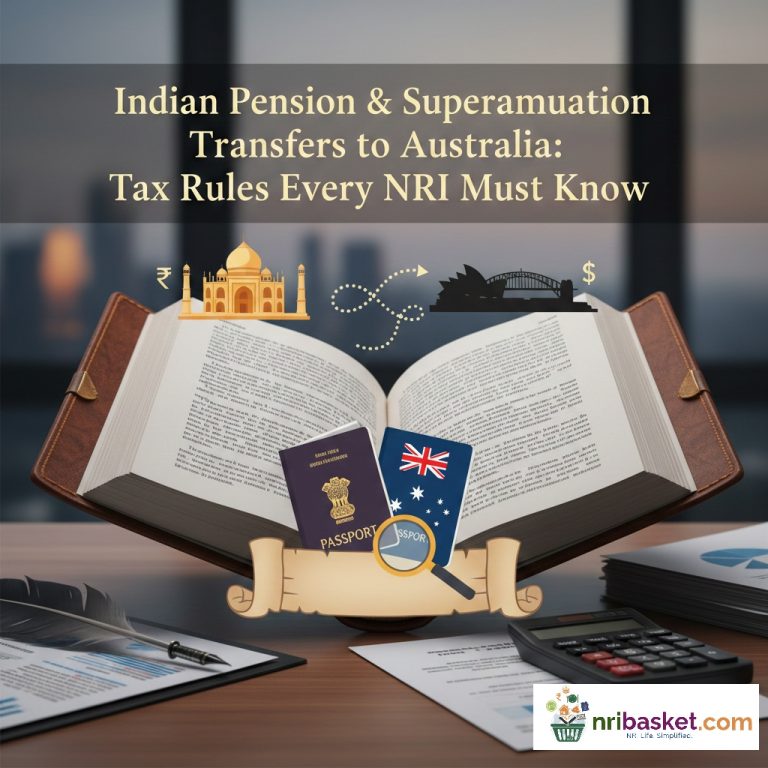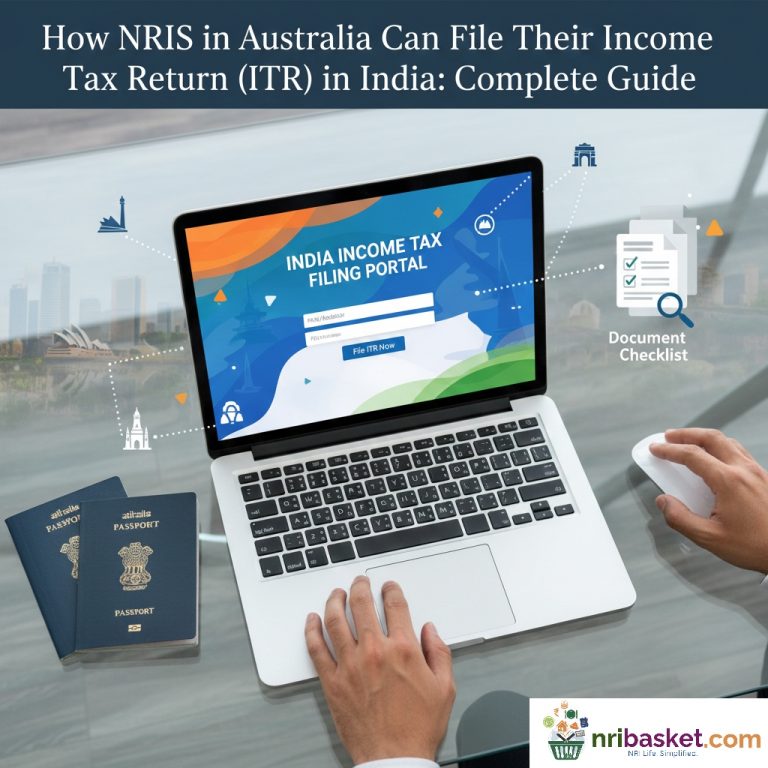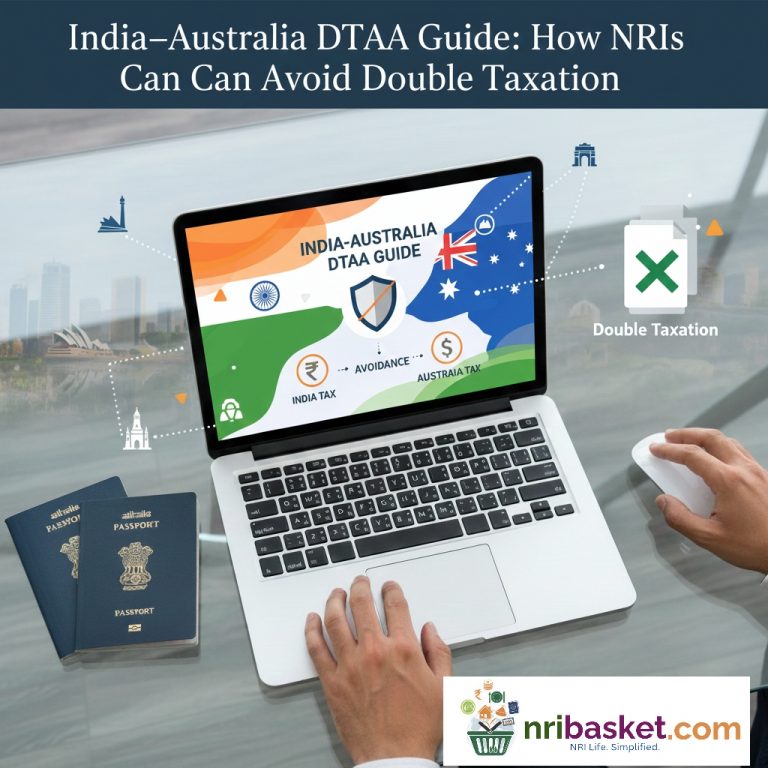
Australian Tax Residency Rules for Indian Citizens:
Introduction
Navigating the complexities of international taxation is a critical challenge for many Indian citizens living or working in Australia. One of the most fundamental, yet often misunderstood, concepts is Australian tax residency. Your tax residency status determines not just what income you declare to the Australian Taxation Office (ATO), but also which tax rates apply, what deductions you can claim, and how your worldwide income is treated. This definitive 2024 guide aims to demystify the ATO’s residency rules for Indian citizens, providing clarity on the various tests, the impact of the India-Australia Double Tax Avoidance Agreement (DTAA), and the practical implications for your earnings, investments, and financial planning both in Australia and back home. Understanding these rules is essential for compliance and avoiding costly mistakes.
Australian Tax Residency Guide for Indian Citizens (2024): Unpack ATO tax residency rules for NRIs. Learn about the ‘resides,’ ‘domicile,’ and ‘183-day’ tests, DTAA tie-breaker rules, and how your status impacts worldwide income, capital gains, and tax rates in Australia. Essential insights for compliance.
long answer: Australian tax residency determines whether you pay tax on your worldwide income in Australia or only on your Australian-sourced income. For Indian citizens, understanding this is crucial as it impacts their overall tax obligations and potential double taxation issues between India and Australia.
long answer: The Australian Taxation Office (ATO) is responsible for determining an individual’s tax residency status based on a set of residency tests outlined in Australian tax law. This is distinct from immigration or visa residency.
long answer: The ATO uses four main tests to determine tax residency: the ‘resides’ test (most common), the ‘domicile’ test, the ‘183-day’ test, and the ‘Commonwealth Superannuation Fund’ test. You are a resident if you satisfy any one of these tests.
long answer: The ‘resides’ test is about whether you genuinely reside in Australia, considering factors like your intention, family and social ties, employment, business ties, duration and continuity of physical presence, and the maintenance of a place of abode. For Indian citizens, this means assessing if Australia has become their ordinary place of living.
long answer: Key factors include your physical presence in Australia, your intention to reside, the continuity and duration of your stay, where your family and social ties are, your employment and business activities, and where your primary assets (house, car, bank accounts) are located.
long answer: The ‘domicile’ test considers where your permanent home (domicile) is. If your domicile is in Australia, you are an Australian resident unless the ATO is satisfied that your permanent place of abode is outside Australia. If your domicile is outside Australia (e.g., India), you are a resident if you have been in Australia for more than half the income year (unless permanent place of abode is outside Australia).
long answer: If you are physically present in Australia for 183 days or more during an income year (1 July to 30 June), you are deemed an Australian resident for tax purposes, unless you can prove that your usual place of abode is outside Australia and you do not intend to take up residence here.
long answer: This test is less common for general Indian citizens and primarily applies to Australian government employees who are members of the Commonwealth Superannuation Scheme (CSS) or the Public Sector Superannuation Scheme (PSS). If you’re contributing to these schemes, you’re usually considered a resident.
long answer: If you are an Australian tax resident, you are liable to pay Australian income tax on all your worldwide income, regardless of where it is sourced. This includes income earned in India.
long answer: If you are a non-resident for Australian tax purposes, you are only liable to pay Australian income tax on income that has an Australian source, such as employment income for work done in Australia, Australian rental income, or capital gains from Australian assets.
long answer: If an Indian citizen is considered a tax resident of both Australia and India under each country’s domestic laws, the India-Australia Double Tax Avoidance Agreement (DTAA) contains ‘tie-breaker’ rules. These rules determine which country has the primary taxing rights, effectively establishing a single tax residency for DTAA purposes.
long answer: The DTAA tie-breaker rules consider: 1. Where you have a permanent home available; 2. Where your centre of vital interests (personal and economic ties) is closer; 3. Where you have an habitual abode; 4. Your nationality. If these don’t resolve it, the competent authorities will decide by mutual agreement.
long answer: For many Indian citizens arriving in Australia on long-term visas (e.g., skilled migration, student visas with work rights) with an intention to reside indefinitely, they may become an Australian tax resident from the day they arrive, satisfying the ‘resides’ test.
long answer: Upon becoming an Australian tax resident, you become subject to Australian capital gains tax (CGT) on your worldwide assets. Certain assets (other than ‘taxable Australian property’ like real estate) you own at the time of becoming a resident may be deemed to have been acquired at their market value on that date, potentially leading to CGT on future disposal.
long answer: If you are an Australian tax resident, interest and dividends earned from Indian bank accounts and investments are generally taxable in Australia as part of your worldwide income. The DTAA may allow a foreign income tax offset (FITO) for taxes already paid in India, avoiding double taxation.
long answer: As an Australian tax resident, you must declare all income (interest, rent, capital gains) generated from your Indian assets in your Australian tax return. You don’t necessarily have to declare the existence of the assets themselves, unless they generate taxable income or are subject to capital gains events.
long answer: Even if on a temporary visa (e.g., 482, 457, student), an Indian citizen can still become an Australian tax resident if they satisfy one of the four residency tests, particularly the ‘resides’ test. Being on a temporary visa does not automatically make them a non-resident for tax purposes.
long answer: Australian tax residents benefit from a tax-free threshold, meaning no tax is paid on the first portion of their income (e.g., $18,200). Non-residents for tax purposes do not receive this threshold and pay tax from the first dollar earned in Australia at a higher rate.
long answer: When an Australian tax resident becomes a non-resident, certain assets (like shares or managed funds, but not generally real estate) are deemed to be sold at their market value just before ceasing residency. This can trigger a capital gains tax event. Afterward, only Australian-sourced income is taxable in Australia.
long answer: If you are an Australian tax resident, you can claim allowable tax deductions for work-related expenses, education expenses, and other eligible costs, reducing your taxable income. Non-residents have more limited deduction opportunities, generally only for expenses directly related to Australian-sourced income.
long answer: While technically possible if you spend very little time in any single country and don’t meet any country’s residency tests, it is highly unlikely and uncommon. Usually, you will be deemed a tax resident in at least one country based on domestic laws and DTAA tie-breaker rules.
long answer: The ATO may ask for copies of your visa, rental agreements or property ownership documents, bank statements, utility bills, employment contracts, flight itineraries, and details of family/social connections to ascertain your residency status.
long answer: If you are an eligible employee working in Australia, your employer must pay superannuation contributions on your behalf. If you leave Australia permanently on certain temporary visas, you may be able to claim your super as a ‘Departing Australia Superannuation Payment’ (DASP), subject to tax.
long answer: It is possible to meet the domestic residency criteria for both India and Australia simultaneously. In such cases, the India-Australia DTAA’s tie-breaker rules are invoked to determine a single tax residency for the purpose of applying the DTAA, avoiding conflicting claims over taxing rights.
long answer: Tax residency rules are complex and highly dependent on individual circumstances. Seeking advice from a qualified tax professional specializing in international taxation is crucial to ensure correct classification, understand tax obligations in both countries, and avoid potential penalties for non-compliance.
long answer: Many international students from India do become Australian tax residents, especially if their course is long, they spend significant time in Australia, and establish a ‘home’ here (satisfying the ‘resides’ test). It’s not determined solely by the student visa type.
long answer: As an Australian tax resident, rental income from your Indian property is taxable in Australia. Any capital gains arising from the sale of that property are also taxable in Australia. You can typically claim a foreign income tax offset for any tax paid on these amounts in India, as per the DTAA.
long answer: When residency is unclear, the ATO often requests a ‘Statement of Facts’ from individuals. This is a comprehensive document outlining personal circumstances, intentions, ties to Australia and India, travel history, and other relevant information to help the ATO make a determination.
long answer: Eligibility for Medicare (Australia’s public health insurance) is generally linked to being an Australian resident for tax purposes and having permanent residency or certain long-term visas. Some temporary residents from specific countries with reciprocal health care agreements may also be eligible, but not all Indian citizens on temporary visas will qualify automatically.
long answer: Ceasing Australian tax residency is not automatic upon departure. The ATO will assess if your permanent place of abode has genuinely shifted outside Australia and if you have severed your ties with Australia. Factors like maintaining a home in Australia, family remaining, and future intentions will be considered.
long answer: If you are an Australian non-resident for tax purposes, you typically cannot utilize franking credits attached to dividends from Australian shares. Franking credits are designed to prevent double taxation for Australian residents, and non-residents are taxed at flat rates on their Australian dividends without the benefit of these credits.
long answer: These personal factors are highly influential under the ‘resides’ test. If your spouse and children reside with you in Australia, children attend Australian schools, and you have established significant social connections, it strongly indicates that Australia is your ordinary place of residence, even if you maintain ties to India.
long answer: FIFO workers from India who maintain their primary home, family, and significant economic ties in India and only come to Australia for specific work rotations are often considered non-residents for tax purposes. Their residency status is determined by the specific facts and circumstances, applying the general residency tests.
long answer: The standard deadline for lodging your Australian income tax return is 31 October following the end of the income year (which is 30 June). If you use a registered tax agent, they usually have extended lodgment deadlines.
long answer: If you believe you were incorrectly treated as a non-resident and paid higher non-resident tax rates, you can amend your tax return with the ATO to reflect your correct residency status and potentially receive a refund of excess taxes paid.
long answer: The most accurate and up-to-date official information on Australian tax residency rules, including detailed guidance and rulings, can be found directly on the Australian Taxation Office (ATO) website (ato.gov.au).
long answer: Having an ABN means you are operating as a business or sole trader in Australia, which is a factor the ATO considers under the ‘resides’ test for establishing economic ties. However, holding an ABN alone doesn’t automatically determine your tax residency.
long answer: A TFN is a unique number issued by the ATO to individuals and organizations for tax and superannuation purposes. If you are working in Australia, receiving certain government payments, or earning interest, you will need a TFN, regardless of your tax residency status, to ensure you are taxed correctly and avoid higher withholding taxes.
long answer: If you are an Australian tax resident, your foreign pensions, including those from India, are generally taxable in Australia. However, specific rules and DTAA provisions might apply to reduce or modify this taxation, such as foreign income tax offsets. It’s essential to check the specific DTAA clauses related to pensions.
long answer: A change in your Indian visa status (e.g., from visitor to work visa) does not automatically change your Australian tax residency status. Tax residency is determined by the ATO’s four tests, which look at your overall circumstances and ties, not just your visa type.
long answer: Generally, temporary residents (including most Indian citizens on temporary visas) are not eligible for Medicare unless they are from a country that has a Reciprocal Health Care Agreement with Australia. It is essential for temporary residents to arrange appropriate private health insurance.
long answer: Australian tax residents have progressive tax rates starting with a tax-free threshold. Non-residents have a flat higher tax rate from the first dollar earned in Australia (e.g., 32.5% for income up to $120,000 for 2023-24), making their Australian-sourced income significantly more taxed than a resident’s initial income.
long answer: If you are an Australian tax resident and have paid tax in India on income or capital gains that are also taxable in Australia, you may be able to claim a foreign income tax offset (FITO) in your Australian tax return, up to certain limits, to prevent double taxation.
long answer: If you are an Indian citizen residing in India (and a non-resident for Australian tax purposes) and own an investment property in Australia, the rental income you earn from that property is considered Australian-sourced income and is taxable in Australia at non-resident tax rates.
long answer: While superannuation residency generally aligns with income tax residency, there can be nuances. For instance, specific rules apply to unclaimed super money or the tax treatment of super benefits if you are a non-resident. It’s best to confirm with the ATO or a superannuation advisor.
long answer: The ‘ordinarily resident’ concept is central to the ‘resides’ test. It means where you have your usual, normal, or customary residence, considering the continuity and regularity of your presence and your purpose for being in Australia.
long answer: When you lodge your annual income tax return in Australia, you will be asked to declare your residency status for tax purposes. It’s crucial to select the correct status based on the ATO’s tests. If unsure, professional advice should be sought before lodging.
Australian tax residency for Indian citizens, ATO tax residency rules NRI, India Australia DTAA, 183-day rule Australia, tax for Indian citizens in Australia, Australian tax non-resident, Australian tax resident, worldwide income tax Australia, OCI tax implications Australia, Indian income taxable in Australia.




